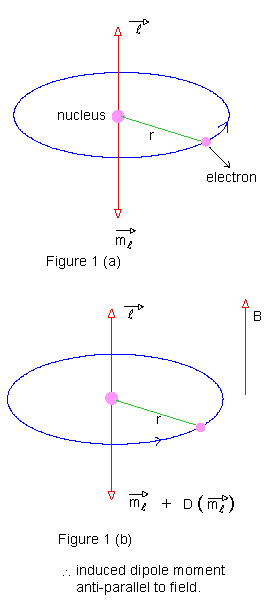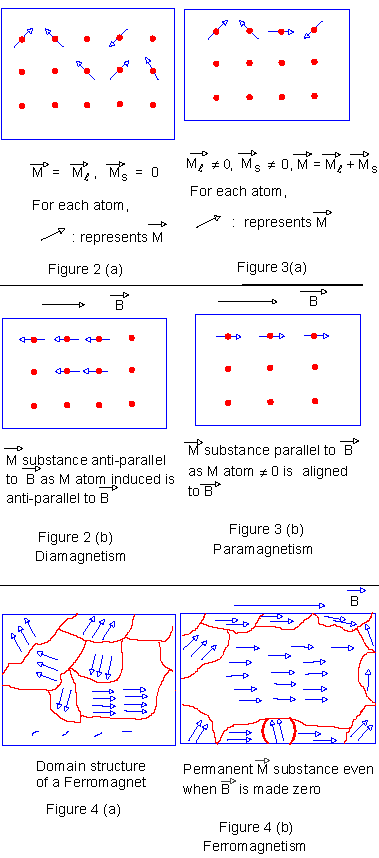27.3 Theory of Ferromagnetism & Curie temperature of Ferromagnets The essential origin of Ferromagnetism is the same as that of Diamagnetism or Paramagnetism.
However, as greater stability arises out of minimum potential energy requirement of lattice structures in
substances (such as Iron, Cobalt, Nickel etc.), it is found that not only does each atom have net
(i) Alignment of domains initially not parallel to the field in the direction of the field. (ii) growth in size of domains which by chance had their
The acquired induced When heated, the domain alignments gradually begin to break and the ferromagnet gradually loses its magnetism. At a certain critical temperature, the domain structure also breaks down leaving randomly oriented atomic dipoles i.e. the substance becomes a paramagnet. This critical temperature is called Curie temperature.
********** |
27.1 Diamagnetism,
Paramagnetism and Ferromagnetism Follow @Pinkmonkey_com  |


